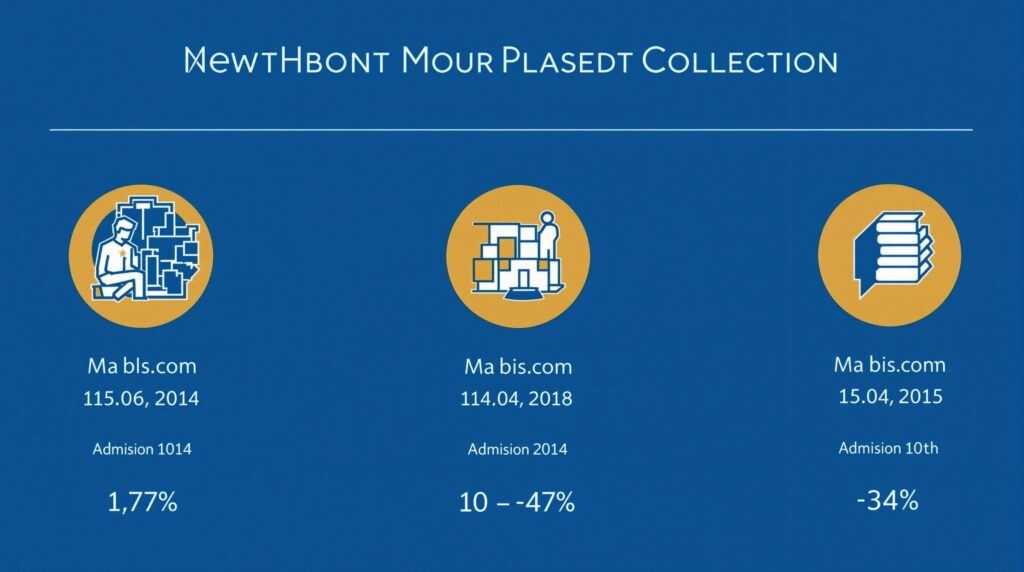California’s educational landscape offers incredible opportunities through various foundations in CA that provide grants and scholarships for students and professionals alike. From Silicon Valley’s tech philanthropists to government-backed initiatives, these funding sources can transform educational journeys and career trajectories for those who know how to access them.
Key Takeaways
- Over $6 billion in educational grants are available through major California foundations in 2025
- Silicon Valley Community Foundation leads with $5.08 billion in annual giving focusing on STEM education and workforce development
- Government programs like Golden State Pathways offer $450 million for career development in healthcare, technology, and climate fields
- Students can access significant scholarship opportunities through NSF S-STEM, CalKIDS, and industry-specific foundations
- Early applications and targeting high-demand sectors significantly increases your chances of securing funding
California’s Educational and Career Funding Landscape
California stands as a beacon for educational funding, with diverse opportunities available through foundations, government programs, and private-sector initiatives. The state’s commitment to education is evident in the more than $6 billion available for grants, scholarships, and career advancement programs. These resources serve everyone from kindergarteners to graduate students and working professionals seeking to upgrade their skills.
Understanding this funding ecosystem requires familiarity with the major players and their priorities. Some foundations focus exclusively on STEM fields, while others target healthcare pathways or early childhood education. By aligning your educational goals with the right funding source, you can dramatically reduce financial barriers to academic and professional success. This guide will help you identify and secure educational grants from top foundations across California.

Silicon Valley’s Tech Giants: Leading Educational Philanthropy
Silicon Valley has transformed from a tech hub into a powerhouse of educational philanthropy. The Silicon Valley Community Foundation leads this charge with an impressive $5.08 billion in annual giving, making it California’s largest contributor to education and employment initiatives. Their focus areas include STEM education, college access for underserved communities, and technology workforce training.
Another significant player is the SchoolsFirst Federal Credit Union Education Foundation, which has awarded over $2.2 million to 875+ teachers since its inception. These grants directly support innovative classroom projects in K-12 and community college programs across core subjects. To qualify for SchoolsFirst grants, you must be a California public or private school educator with a creative project that enhances student learning.
Tech companies have recognized that investing in education creates their future workforce. This has created a virtuous cycle where industry needs drive targeted educational funding, particularly in computer science, artificial intelligence, and information security. For students and educators in these fields, Silicon Valley foundations offer some of the most generous funding opportunities in the nation.
Health and Community-Focused Foundations Transforming Education
Health-focused foundations are making significant investments in California’s educational landscape. The California Endowment, with $193.5 million in assets, targets healthcare career pathways and youth development in underserved communities. Their initiatives focus on creating a pipeline of healthcare professionals through dual-enrollment programs that link high schools to community colleges, emphasizing healthcare certifications.
The CGA Educational Foundation offers another specialized funding stream, with an $800,000 scholarship pool for the 2025-26 academic year. These one-time scholarships provide up to $15,000 for undergraduate and graduate students pursuing degrees in agriculture, engineering, or business. Students affiliated with CGA member companies receive priority consideration, making this an excellent opportunity for those with industry connections.
These foundations are working to address critical workforce shortages in healthcare and agriculture while promoting educational equity. By targeting their resources to specific career pathways, they create sustainable paths to professional success. Their dual focus on community development and career preparation exemplifies California’s integrated approach to educational funding.
Government-Backed Career Pathway Programs: Billions in Opportunity
Government programs represent some of the largest funding opportunities in California’s educational landscape. The Golden State Pathways Program has allocated $450 million to 300 K-12 schools for developing career pathways through internships, dual-enrollment courses, and industry certifications. Priority sectors include healthcare, technology, and climate-related fields, with preference given to schools serving populations where at least 80% of students come from low-income families.
The Opportunity Young Adult Career Pathway Program matches this investment with another $450 million targeted at individuals aged 18-28 in high-poverty regions like Los Angeles and Fresno counties. These grants require 20% matching funds and proven partnerships with local employers, focusing on placing participants in jobs with family-sustaining wages (≥$25/hour in 2025).
Supporting younger students, the 21st Century Community Learning Centers fund after-school STEM programs for elementary and middle school students in low-performing schools. These federal funds administered by California provide 5-year grants with per-student funding rates adjusted annually for inflation. Together, these programs form a comprehensive support system that addresses educational needs across the entire age spectrum.
Understanding how to access federal financial assistance programs can significantly expand your funding options beyond what’s available at the state level.
STEM Scholarships and Scientific Advancement Funding
STEM fields receive extraordinary funding support in California, reflecting their importance to the state’s economy. The NSF S-STEM Scholarships lead this category, offering up to $15,000 per year for undergraduates and $20,000 per year for graduate students in STEM disciplines. To qualify, you must be a domestic student with demonstrated financial need, typically defined as a household income at or below 80% of the state median.
These scholarships function as “last dollar” awards, meaning participating colleges apply them after other aid is calculated. This approach ensures that NSF funding maximizes impact without displacing other financial aid sources. The program specifically targets students who might otherwise be unable to pursue STEM careers due to financial constraints.
For high school seniors in specific counties, the State Bank of India (California) Scholarships offer ten $1,000 awards. Eligibility requirements include a minimum 2.8 GPA and household income below California’s moderate-income level ($117,400 for a family of four). These more accessible entry-level scholarships can be stepping stones to larger funding opportunities later in your academic career.
Early Education Investments: Setting Up California’s Youth for Success
California is making unprecedented investments in early childhood education through innovative programs like CalKIDS Scholarship Accounts. These accounts provide $100 seed deposits for children born after July 1, 2023, and an additional $500 for low-income K-12 students. The program also offers bonus incentives: $25 for claiming the account and $50 for linking it to a ScholarShare 529 plan.
These early investments address the reality that educational attainment gaps often begin before kindergarten. By providing financial resources from birth, California aims to create a college-going culture in families that might otherwise view higher education as financially unattainable. The relatively modest initial deposits are designed to grow over time and, more importantly, to change family expectations about educational possibilities.
For 2025, early childhood education funding priorities will continue to expand, with particular emphasis on programs that integrate parental education, child development science, and community support systems. These holistic approaches recognize that successful early education requires family engagement and resource coordination across multiple systems.
Strategic Application Tips: Maximizing Your Chances
Securing educational funding requires more than just eligibility—it demands strategic application approaches. One key strategy is leveraging matching funds. Programs like OYA and 21st CCLC require 20-33% matching contributions. You can meet these thresholds by partnering with local businesses or using in-kind services, effectively multiplying your funding impact.
Industry trends strongly influence funding availability. Health care, clean energy, and advanced manufacturing grants receive 40% more funding than other fields due to state workforce demands. Aligning your educational goals with these high-impact sectors can significantly increase your chances of securing support.
Timing matters critically for many funding opportunities. The CDTC’s Educational Support Grant, for example, distributes funds on a first-come, first-served basis. Applications for 2024-25 funding are already open, highlighting the importance of planning application timelines well in advance. Building competitive applications often requires partnerships with local businesses or leveraging in-kind services to demonstrate community commitment and sustainability.
Looking beyond California, national foundations offering educational grants can provide additional funding streams that complement state-specific opportunities.
Future Trends: California’s Educational Funding Outlook for 2025-2030
The next five years promise significant shifts in California’s educational funding priorities. Climate-related educational programs and career pathways are projected to see substantial funding increases, reflecting the state’s commitment to environmental leadership and green job creation. Students focusing on renewable energy, conservation, and climate adaptation technologies will find growing support.
The technology sector’s investment in workforce development continues to expand, with particular emphasis on closing the digital divide and ensuring equitable access to high-demand technical careers. Healthcare education remains a consistent funding priority with increasing foundation support, especially for programs addressing provider shortages in rural and underserved urban areas.
Emerging opportunities are appearing in cutting-edge fields like AI ethics, sustainable agriculture, and advanced manufacturing. These areas represent the intersection of California’s traditional economic strengths and future workforce needs. For students and educators, staying informed about these evolving funding landscapes will be crucial for accessing the most relevant and generous support options in the coming years.
Sources
childdevelopment.org – Educational Support Grant Application
learningpolicyinstitute.org – Funding Community Schools in California Brief
grants.ca.gov – Opportunity Young Adult Career Pathway Program Grant
cgaef.org – College Scholarships
schoolsfirstfcu.org – Education Foundation
nsf.gov – S-STEM NSF Scholar



